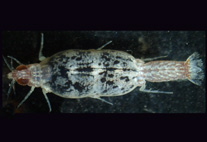Abstract
William John Macleay (1882) described Serranus magnificus from the holotype collected by Andrew Goldie in Port Moresby, Papua New Guinea. The holotype was originally in the Macleay Museum, but was subsequently transferred to the Australian Museum (AMS) in 1907, along with around 500 additional lots of mostly Goldie New Guinea and “Chevert” expedition fishes (AMS series I.9039–I.9198, I.9200–I.9241, I.9457–I.9476, I.9620–I.9726, I.9739–I.9802 and I.13356–I.13456), and was duly registered there (registration number I.9460). The specimen was subsequently misplaced, and could not be located by J.E. Randall and P.C. Heemstra for their revision of Indo-Pacific Epinephelinae (Heemstra & Randall 1991). They were unable to associate the name with any known species, and listed the species as a nomen dubium (also indicated as such by Heemstra & Randall 1993). This is surprising as Macleay’s description mostly agrees with Epinephelus lanceolatus (Bloch 1790), with the exception of the number of anal-fin rays (III,9 versus III,8). His description is reproduced here (Macleay 1882, p. 229):

